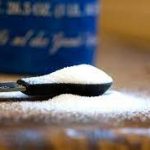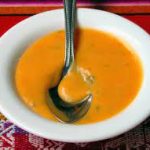Sometimes cooking without gluten is as easy as omitting some ingredients. However, gluten-free baking requires a little more effort. Traditional baking uses all-purpose wheat flour so much that you need to figure out what you can replace it with and how the new ingredients will affect your recipe.
Once you learn the “rules of gluten-free baking,” you will be able to recreate all your favorite recipes with confidence without gluten.
What can you expect from gluten-free baking?
Understanding the differences between gluten-free and conventional recipes will allow you to achieve the texture and taste you desire.
Let’s start with gluten.
Gluten is a protein that is elastic and found in wheat, barley and rye. It can be used in recipes to provide structure and a satisfying texture because gluten’s elasticity allows doughs and batters to trap air from leavening agents like yeast, baking powder or baking soda, which is how they can rise.
Gluten-free baked goods without this protein can be dense, grainy, or crumbly. But they don’t need to be! Finding a flour substitute is the first step to gluten-free goodness.
All-purpose wheat flour is the most popular flour for baking. It has a unique composition that can’t be replicated with one gluten-free flour. To replicate this recipe, you will need multiple flours and binding or a pre-mixed, store-bought mix.
These blends won’t be the same as wheat flour, however good they may taste. Even though you use a 1:1 blend to make a seamless swap for traditional flour, there are still some differences between traditional and gluten-free recipes.
Gluten-free flours absorb more liquid.
Gluten-free recipes may have a different mix of ingredients. Gluten-free flours are often made with fine starches that absorb more liquid than regular flour.
Gluten-free recipes tend to require more liquid, which results in looser batters. To add volume and lighten the texture, they may require more leavening, such as baking powder. To provide structure and a better crumb, eggs can be used in larger quantities.
Overmixing is possible for gluten-free batters.
You’ll find traditional baking recipes that warn you not to overmix the batter. Over-mixing can cause gluten to form and result in unpleasant toughness.
Gluten-free recipes are easy because there is no gluten to be concerned about. Gluten-free baked goods have a longer mix that allows for more structure and a better rise.
Gluten-free batters must be allowed to rest.
After mixing, let your batter rest for a while. This is something you might not think of when baking traditional. Even the most well-researched combinations of gluten-free flours and alternative grains can result in a grainy texture. Rest your batter for 30 minutes to allow the flour time to soften and hydrate.
For gluten-free baked goods, such as cookies and pancakes that take a shorter time to bake, resting is crucial.
There is no need to knead.
Baking bread and other traditional baked goods require kneading to create gluten. Surprisingly, gluten-free recipes do not contain any gluten. They don’t require any kneading since they don’t contain gluten (surprise!
Noting that kneaded bread dough is smooth and elastic, gluten-free bread dough will be more sticky.
Bake time for gluten-free batters should be longer.
Gluten-free batters are more liquidy than traditional ones, so they take longer to bake. You may get a mushy, gummy texture if you take them out of the oven too quickly.
Follow the instructions on the gluten-free recipe and not the cues that you would normally use for traditional baking.
Essential Gluten-Free Baking Ingredients
All-purpose wheat flour is the staple of a traditional baker’s arsenal. We need several gluten-free ingredients to replace this grain. Some are high in protein, others high in starch, and some act as a binder.
You can now find ready-to-use mixes of ingredients intended to be an all-purpose substitute for all-purpose flour. Among the most common ingredients are rice flour, tapioca starch and potato starch.
However, each company has a different selection, so the results may vary. To achieve a similar result, ensure you use the same brand of all-purpose gluten-free flour when following a recipe.
You may want to make specialty cakes, bran muffins, or even dinner rolls. If all-purpose flour is not enough, stock up on gluten-free flours such as oat flour, nut flours and bean flours. To adjust the structure of what you bake, you will also need binders such as xanthan gum and psyllium husk.
You must read all labels on any baking products you use to follow a gluten-free diet. Sometimes wheat can sneak into ingredients that are otherwise gluten-free due to manufacturing processes. Cross-contamination can sometimes lead to wheat in products. We need to know this on the package labels.
What I Wish I Had Known Before I Started Baking Gluten Free
Over my 15+ years of gluten-free living, I have learned a few tricks that allow me to enjoy delicious and consistent gluten-free baked goods every time.
Follow the recipe.
Gluten-free baking is not the same as traditional baking. While you might feel tempted to make your recipe, remember that gluten-free baking is not the same as traditional baking. Instead, stick with gluten-free recipes and follow their instructions until you are comfortable.
For best results, use the brand of flour that is specified in the recipe. The back of the package or the brand’s website is a good place to start if you have purchased a gluten-free blend. These recipes were created with that brand in mind and have been proven to be successful.
Do not “dip and sweep.”
This is the best way to measure all-purpose wheat flour. However, it won’t work with gluten-free flour. Gluten-free flours can be finer than wheat flour, so it’s possible to get inconsistent results when you scoop them.
The best way to measure volume is by weight. A kitchen scale will do the trick. If the recipe only gives the quantity in cups, you can spoon the flour into a measuring cup and then flatten it with a flat edge.
The better, the less flour.
My favorite gluten-free baking recipes are the ones that don’t solely rely on flour but also have major ingredients. You can think of banana bread, cornbread and peanut butter cookies, as well as oat muffins and carrot cake. All of these have structure, flavor and texture, thanks to the other ingredients. This is in contrast to a French baguette, which may contain flour, water and yeast, and salt.
Recipes with other activities are great for building confidence if you’re just starting your career.
The freezer is your friend.
Although homemade gluten-free baked goods can often be more delicious than those you can buy at the grocery store, it is still a lot of work to get the oven on every occasion. When I bake something, I always make sure to freeze some for future pleasure. All kinds of bread, including bread, cakes, muffins and quick bread, as well as pizza crusts, brownies, waffles, and cupcakes, freeze well.
Gluten-free baked goods don’t keep as well as conventional products, so it’s a good idea to freeze anything you don’t use in a few days.
Troubleshooting Texture
If you are ready to make your favorite recipes gluten-free, treat the first attempt as an experiment. You can then tweak and improve. These tips can help you overcome any textural problem.
- Gummy or Mushy: Reduce the temperature and cook for a longer time
- Crumbly – Increase the binder like xanthan gum and psyllium husk
- Thin or gritty: Allow the batter to rest for 30 minutes before baking
- Dense Increase the leavener, such as baking powder
- Dry: Add more liquid
Recipes for Gluten-Free Baking
Many recipes can fool even the most ardent gluten-free-loving bakers. Don’t worry if your recipe isn’t as fluffy, flaky or chewy as you remembered. A gluten-free baked good can still taste delicious, even though it may look and feel different.



